Themed collection Bioelectronics

Front cover
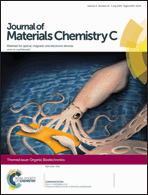
Front cover
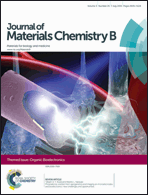
Inside front cover

Back cover
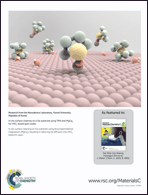
Contents list
Contents list
Journal of Materials Chemistry B & C joint themed issue: organic bioelectronics
Guest editors Christopher J. Bettinger and Natalie Stingelin introduce this Journal of Materials Chemistry B & C joint themed issue on organic bioelectronics.

J. Mater. Chem. B, 2015,3, 4945-4946
https://doi.org/10.1039/C5TB90079D
Organic bioelectronics for neural interfaces
Organic bioelectronics offers important opportunities to study complex biological systems, such as neural networks, and develop new biomedical tools for the diagnosis and treatment of brain diseases.
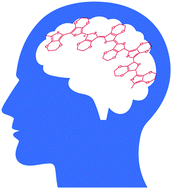
J. Mater. Chem. C, 2015,3, 6424-6430
https://doi.org/10.1039/C5TC00569H
Taking electrons out of bioelectronics: bioprotonic memories, transistors, and enzyme logic
We highlight our recent efforts in developing devices that control the flow of H+ and OH− in biological polymers.
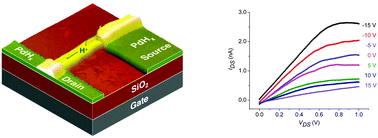
J. Mater. Chem. C, 2015,3, 6407-6412
https://doi.org/10.1039/C5TC00502G
From commercial tyrosine polymers to a tailored polydopamine platform: concepts, issues and challenges en route to melanin-based bioelectronics
Current issues/challenges in the development of biocompatible eumelanin-based devices ranging from commercial eumelanins through 5,6-dihydroxyindole polymers to mussel-inspired polydopamine are presented.
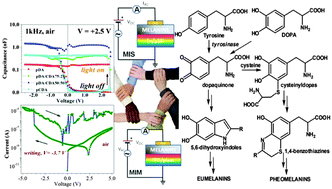
J. Mater. Chem. C, 2015,3, 6413-6423
https://doi.org/10.1039/C5TC00570A
Amyloid-directed assembly of nanostructures and functional devices for bionanoelectronics
Amyloid-directed assembly of nanostructures and amyloid-enabled functional devices are highlighted to show the promise of amyloids for future bionanoelectronics.
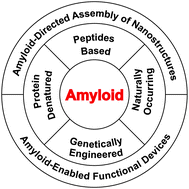
J. Mater. Chem. B, 2015,3, 4953-4958
https://doi.org/10.1039/C5TB00374A
Toward organic electronics with properties inspired by biological tissue
The carbon framework common to both organic semiconductors and biological structures suggests that these two classes of materials should be easily integrated.
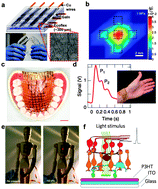
J. Mater. Chem. B, 2015,3, 4947-4952
https://doi.org/10.1039/C5TB00173K
Two dimensional nanosheets as conductive, flexible elements in biomaterials
Two dimensional nanosheets have great potential as conductive and/or flexible elements in biomaterials.

J. Mater. Chem. B, 2015,3, 4959-4964
https://doi.org/10.1039/C5TB00087D
“Garnishing” the photosynthetic bacterial reaction center for bioelectronics
Chemical manipulations of the photosynthetic bacterial reaction center for the implementation of this photoenzyme into bioelectronic devices are overviewed.
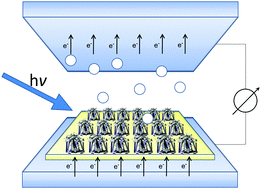
J. Mater. Chem. C, 2015,3, 6471-6478
https://doi.org/10.1039/C5TC00775E
Electrochemical processes and mechanistic aspects of field-effect sensors for biomolecules
Electronic biosensing is a leading technology for determining concentrations of biomolecules.
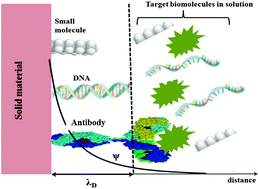
J. Mater. Chem. C, 2015,3, 6445-6470
https://doi.org/10.1039/C5TC00755K
Well-designed metal nanostructured arrays for label-free plasmonic biosensing
Well-designed metal nanostructured arrays hold great advantages for on-chip label-free plasmonic biosensing, meeting the need for portable and rapid diagnosis.
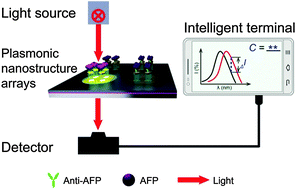
J. Mater. Chem. C, 2015,3, 6479-6492
https://doi.org/10.1039/C5TC00553A
Nano-bioelectronics via dip-pen nanolithography
This review charts the development of dip-pen nanolithography (DPN) for the fabrication of nanoscale bioelectronic and biomaterial interfaces.

J. Mater. Chem. C, 2015,3, 6431-6444
https://doi.org/10.1039/C5TC00186B
Organic bioelectronics in infection
Organic bioelectronics for dynamic modulation of normal and infected tissue microenvironments, and the development towards fully automated cell culture systems.
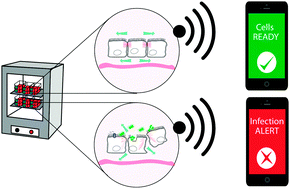
J. Mater. Chem. B, 2015,3, 4979-4992
https://doi.org/10.1039/C5TB00382B
Photoelectric artefact from optogenetics and imaging on microelectrodes and bioelectronics: new challenges and opportunities
Blue laser photoelectrically and photothermally exciting a wireless carbon fiber electrode to activate a nearby neuron.
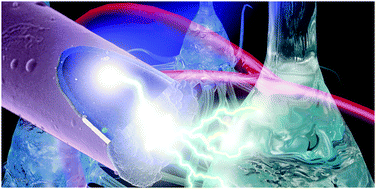
J. Mater. Chem. B, 2015,3, 4965-4978
https://doi.org/10.1039/C5TB00108K
Rational design and applications of conducting polymer hydrogels as electrochemical biosensors
Conducting polymer hydrogels (CPHs) are conducting polymer-based materials that contain high water content and have physical properties, resembling the extracellular environment.
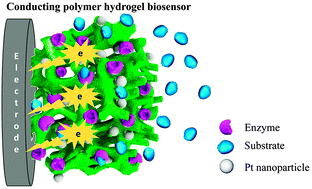
J. Mater. Chem. B, 2015,3, 2920-2930
https://doi.org/10.1039/C5TB00090D
Protein nanowires with conductive properties
We have investigated protein fibrils decorated with metallic polymers using conductive AFM.
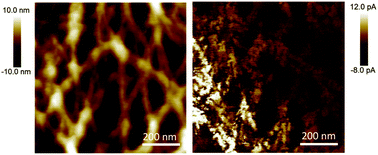
J. Mater. Chem. C, 2015,3, 6499-6504
https://doi.org/10.1039/C5TC00896D
Infrared invisibility stickers inspired by cephalopods
The skin morphology of cephalopods endows them with remarkable camouflage capabilities. Herein, we report infrared invisibility stickers inspired by the structures and proteins found in cephalopod skin. These stickers enable arbitrary objects to acquire reconfigurable infrared camouflage patterning. Our work represents an initial step towards wearable biomimetic infrared stealth technologies.
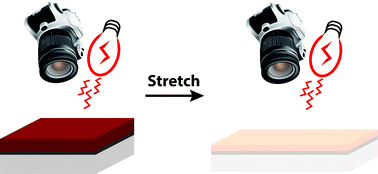
J. Mater. Chem. C, 2015,3, 6493-6498
https://doi.org/10.1039/C5TC00125K
Peptide-directed assembly of functional supramolecular polymers for biomedical applications: electroactive molecular tongue-twisters (oligoalanine–oligoaniline–oligoalanine) for electrochemically enhanced drug delivery
We report the preparation and characterization of films of electroactive supramolecular polymers based on non-electroactive oligoalanines and electroactive oligoanilines.
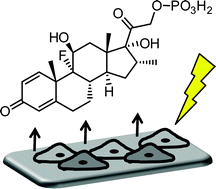
J. Mater. Chem. B, 2015,3, 5005-5009
https://doi.org/10.1039/C5TB00106D
Phase angle spectroscopy on transparent conducting polymer electrodes for real-time measurement of epithelial barrier integrity
A PEDOT:PSS based sensor for continuous electronic monitoring of epithelial barrier formation and disruption compatible with microscopy.
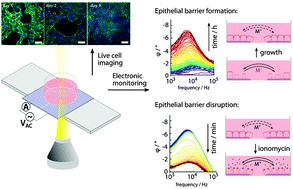
J. Mater. Chem. B, 2015,3, 4997-5000
https://doi.org/10.1039/C5TB00381D
Photostable AIE fluorogens for accurate and sensitive detection of S-phase DNA synthesis and cell proliferation
Two azide-functionalized AIE fluorogens are synthesized and used for detecting S-phase DNA synthesis and cell proliferation based on EdU assay.
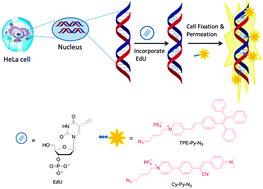
J. Mater. Chem. B, 2015,3, 4993-4996
https://doi.org/10.1039/C5TB00458F
Multiphoton microfabrication of conducting polymer-based biomaterials
Multiphoton microfabrication was used to prepare CP-based materials for drug delivery and stimulating tissues.
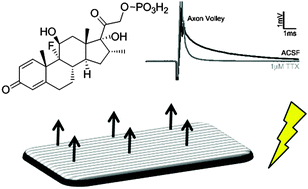
J. Mater. Chem. B, 2015,3, 5001-5004
https://doi.org/10.1039/C5TB00104H
pH-induced on/off-switchable graphene bioelectronics
Switchable interfaces can deliver functionally reversible reactivity with their corresponding analytes, which allows one to positively respond to the activity of biological elements, including enzymes and other biomolecules, through an encoded stimulus.
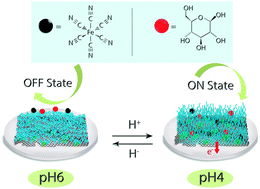
J. Mater. Chem. B, 2015,3, 7434-7439
https://doi.org/10.1039/C5TB01355K
The study of polythiophene/water interfaces by sum-frequency generation spectroscopy and molecular dynamics simulations
Polythiophene/water interfaces are investigated by sum frequency generation spectroscopy and molecular dynamics simulations, showing a preferential edge-on molecular orientation.
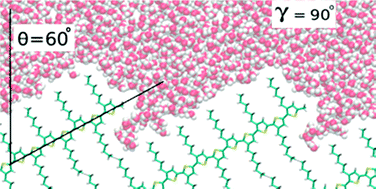
J. Mater. Chem. B, 2015,3, 6429-6438
https://doi.org/10.1039/C5TB00388A
Monitoring of cell layer coverage and differentiation with the organic electrochemical transistor
High resolution monitoring of cell layer integrity with the OECT was up until now, limited to high resistance, barrier tissue type cells. In this work, the sensitivity and versatility of the device is expanded to monitor all adherent cell types.

J. Mater. Chem. B, 2015,3, 5971-5977
https://doi.org/10.1039/C5TB00922G
Elucidating the deprotonation of polyaniline films by X-ray photoelectron spectroscopy
Incubation of PANI films in physiological conditions leads to deprotonation and loss of dopant from the polymer backbone.
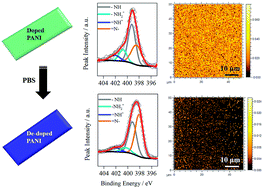
J. Mater. Chem. C, 2015,3, 7180-7186
https://doi.org/10.1039/C5TC01038A
Photostable phosphorescent polymer nanospheres for high sensitivity detection
A simple method is presented for the preparation of photostable phosphorescent polymer nanospheres.
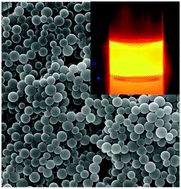
J. Mater. Chem. C, 2015,3, 6565-6572
https://doi.org/10.1039/C5TC00933B
Ionic liquid–water mixtures and ion gels as electrolytes for organic electrochemical transistors
Electrolytes consisting of mixtures of phosphonium ionic liquids and water lead to high ON/OFF ratios in organic electrochemical transistors making use of activated carbon gates.
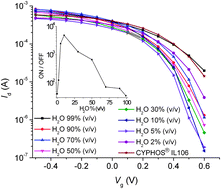
J. Mater. Chem. C, 2015,3, 6549-6553
https://doi.org/10.1039/C5TC00712G
Bioconjugation of hydrogen-bonded organic semiconductors with functional proteins
We report on bioconjugation strategies to functionalize hydrogen-bonded pigment semiconductors with proteins, and demonstrate hybrid bioelectronics devices operating under aqueous conditions.
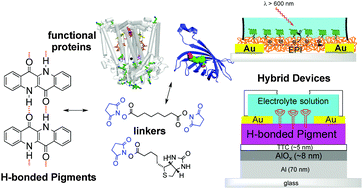
J. Mater. Chem. C, 2015,3, 6554-6564
https://doi.org/10.1039/C5TC00556F
Highly-sensitive epinephrine sensors based on organic electrochemical transistors with carbon nanomaterial modified gate electrodes
The sensitivity of OECT-based epinephrine sensors has been dramatically improved by modifying carbon nanomaterials on the Pt gate electrodes.
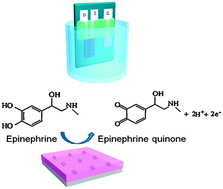
J. Mater. Chem. C, 2015,3, 6532-6538
https://doi.org/10.1039/C5TC01100K
Roll to roll processing of ultraconformable conducting polymer nanosheets
A roll-to-roll process is reported for the preparation of free-standing conductive polymer nanosheets on large areas. Nanosheets are transferred in conformal contact with target surfaces (including skin) and act as unperceivable bio-electrodes.
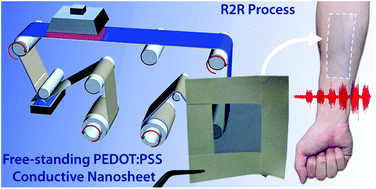
J. Mater. Chem. C, 2015,3, 6539-6548
https://doi.org/10.1039/C5TC00750J
Tailoring melanins for bioelectronics: polycysteinyldopamine as an ion conducting redox-responsive polydopamine variant for pro-oxidant thin films
Polycysteinyldopamine (pCDA), a polydopamine-like polymer with ionic conductor behaviour, can be used for dip-coating various surfaces with pro-oxidant thin films.
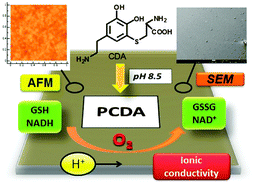
J. Mater. Chem. C, 2015,3, 6525-6531
https://doi.org/10.1039/C5TC00672D
Poly(3,4-ethylenedioxythiophene)-ionic liquid coating improves neural recording and stimulation functionality of MEAs
A novel PEDOT-ionic liquid polymer coating was synthesized for improving the performance of MEAs implanted in the brain.
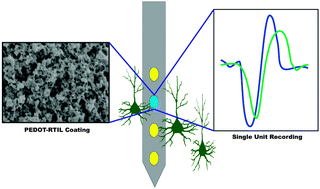
J. Mater. Chem. C, 2015,3, 6515-6524
https://doi.org/10.1039/C5TC00145E
Sequence-dependent mechanical, photophysical and electrical properties of pi-conjugated peptide hydrogelators
An investigation of how systematic variation of peptide sequence influences the nanoscale and bulk properties of 1D-nanostructure forming peptide–π–peptide hydrogelators is reported herein.
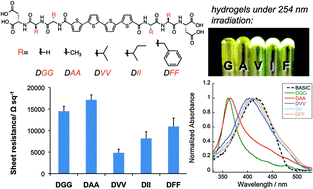
J. Mater. Chem. C, 2015,3, 6505-6514
https://doi.org/10.1039/C5TC00100E
Integrated 3D conducting polymer-based bioelectronics for capture and release of circulating tumor cells
3D conducting polymer-based bioelectronic interface (BEI) devices for dynamically controlling circulating tumor cell capture/release performance through the cyclic potential of electrical stimulation.
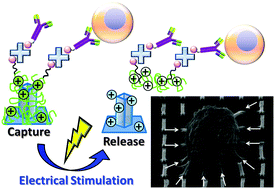
J. Mater. Chem. B, 2015,3, 5103-5110
https://doi.org/10.1039/C5TB00096C
A paper based, all organic, reference-electrode-free ion sensing platform
We present a reference-electrode free, all organic K+ sensitive ion sensing platform fabricated by simplest means on a plain sheet of paper.
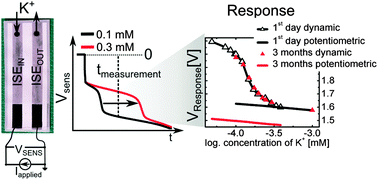
J. Mater. Chem. B, 2015,3, 5095-5102
https://doi.org/10.1039/C5TB00387C
Tailored polymeric membranes for Mycobacterium smegmatis porin A (MspA) based biosensors
We show that protein specific tailoring of membrane forming ABA polymers is necessary for optimal pore-based biosensor performance.

J. Mater. Chem. B, 2015,3, 5080-5086
https://doi.org/10.1039/C5TB00383K
A simple approach for protein covalent grafting on conducting polymer films
By mixing a PEDOT:PSS suspension with the modified biopolymer carboxymethylated dextran (CMD), we obtain conductive films displaying carboxyl (–COOH) groups allowing for covalent grafting of proteins via amide bonds.
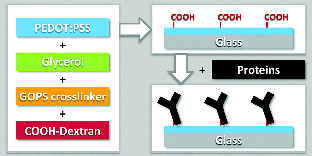
J. Mater. Chem. B, 2015,3, 5087-5094
https://doi.org/10.1039/C5TB00373C
Small bioactive molecules as dual functional co-dopants for conducting polymers
Scanning electron microscope image of surface morphology of conducting polymer PEDOT doped with bioactive molecules.
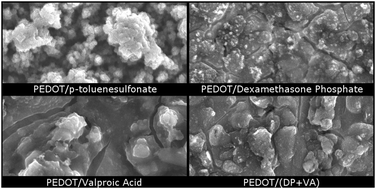
J. Mater. Chem. B, 2015,3, 5058-5069
https://doi.org/10.1039/C5TB00384A
Supplementing π-systems: eumelanin and graphene-like integration towards highly conductive materials for the mammalian cell culture bio-interface
Eumelanin and graphene-like integration towards a competitive exploitation in the materials science of the melanic human pigment.
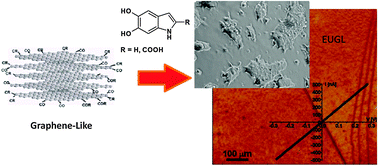
J. Mater. Chem. B, 2015,3, 5070-5079
https://doi.org/10.1039/C5TB00343A
3D conducting polymer platforms for electrical control of protein conformation and cellular functions
Ice-templating of the conducting polymer PEDOT:PSS yields 3D tissue-mimicking scaffolds that can electrically control protein conformation and various cell functions.
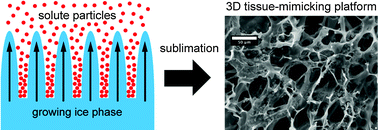
J. Mater. Chem. B, 2015,3, 5040-5048
https://doi.org/10.1039/C5TB00390C
UV crosslinked poly(acrylic acid): a simple method to bio-functionalize electrolyte-gated OFET biosensors
A sensitive EGOFET biosensor fabricated by anchoring bioprobes through a UV crosslinked poly(acrylic acid) coating deposited on an organic semiconductor.
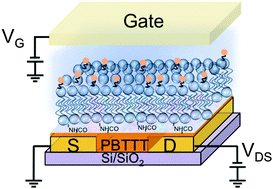
J. Mater. Chem. B, 2015,3, 5049-5057
https://doi.org/10.1039/C5TB00243E
Low frequency electric current noise in glioma cell populations
A low-noise measuring system was developed to accurately detect minute membrane capacitive current oscillations across populations of C6 glioma cells.
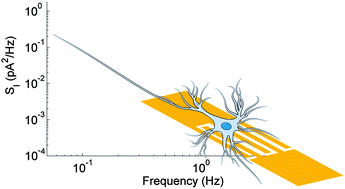
J. Mater. Chem. B, 2015,3, 5035-5039
https://doi.org/10.1039/C5TB00144G
Conducting polymer electrodes for auditory brainstem implants
PEDOT:PSS films are integrated in a flexible neural implant to safely transduce electrical pulses to stimulate the auditory brainstem.
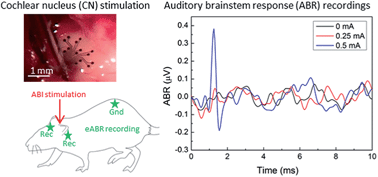
J. Mater. Chem. B, 2015,3, 5021-5027
https://doi.org/10.1039/C5TB00099H
Post-polymerization functionalization of poly(3,4-propylenedioxythiophene) (PProDOT) via thiol–ene “click” chemistry
Post-polymerization functionalization using thiol–ene “click” chemistry provides an effective, convenient means to modify the surface properties of conjugated polymers such as poly(3,4-propylenedioxythiophene) (PProDOT).
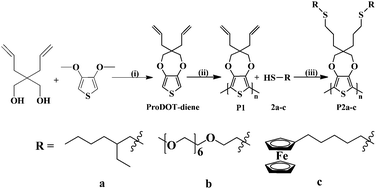
J. Mater. Chem. B, 2015,3, 5028-5034
https://doi.org/10.1039/C4TB02033B
Poly[3,4-ethylene dioxythiophene (EDOT)-co-1,3,5-tri[2-(3,4-ethylene dioxythienyl)]-benzene (EPh)] copolymers (PEDOT-co-EPh): optical, electrochemical and mechanical properties
With increasing amounts of EPh crosslinker, PEDOT-co-EPh copolymer thin films change colors from blue to red, show reduced charged transport, become mechanically stiffer, and remain cytocompatible.
![Graphical abstract: Poly[3,4-ethylene dioxythiophene (EDOT)-co-1,3,5-tri[2-(3,4-ethylene dioxythienyl)]-benzene (EPh)] copolymers (PEDOT-co-EPh): optical, electrochemical and mechanical properties](/en/Image/Get?imageInfo.ImageType=GA&imageInfo.ImageIdentifier.ManuscriptID=C5TB00053J&imageInfo.ImageIdentifier.Year=2015)
J. Mater. Chem. B, 2015,3, 5010-5020
https://doi.org/10.1039/C5TB00053J
About this collection
This joint themed issue of Journal of Materials Chemistry B & C will cover the most recent progress including the design and synthesis of materials systems that conduct both electronic and ionic currents, the development of straight-forward patterning techniques for the fabrication of organic bioelectronics devices for easy integration, the understanding of the working principle of devices operating in aqueous media (where biology takes place), as well as the characterization of organic biological interfaces that mediate cell adhesion. Our aim is to highlight remarkable contributions made by the leading scientists in this important research area and the broad impact of bioelectronics research.